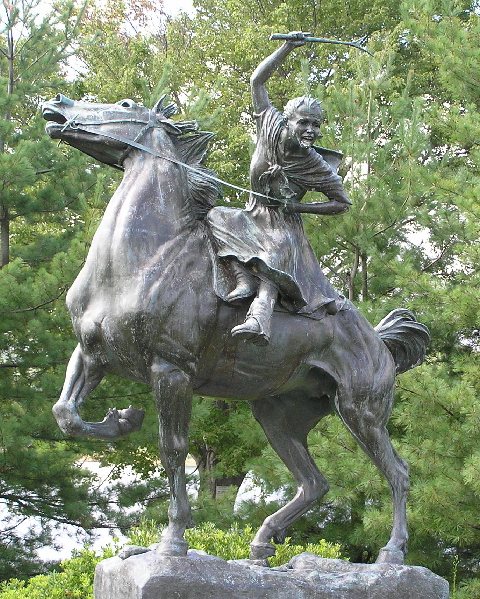 |
| Anthony22 at the English language Wikipedia [GFDL, CC-BY-SA-3.0 or Public domain], via Wikimedia Commons |
Thanks to her, she may have saved the lives of many in Danbury. The afternoon after Sybil traveled through Danbury, the British troops reached the city and burned down three buildings and an unknown number of houses. Unfortunately, some citizens in Danbury were killed by the British. According to family recollections, as written by her great grandson, she left at 9 PM and didn't finish the ride until the sun was rising. She followed a path from Carmel and on to Mahopac. From there, she went onto Kent Cliffs, to Farmers Mills and back home. She had a stick with her that she used to keep her horse going, to knock on doors of citizens to warn them, and to even fight off a highwayman (a thief that robs travelers). She'd returned home tired and rain-drenched after warning the militia force of 400 troops and her father of the British movements.
The militiamen didn't make it in time to defend Danbury, but were able to push New York Colonial Governor General Williams Tryon and his men back to the Long Island Sound. For her brave actions, she became deeply respected in her neighborhood, by her friends, and was even thanked by George Washington, a general at the time.
Other facts about Sybil Ludington
- Her name is spelled "Sibbell" on her gravestone at Maple Avenue Cemetery, Patterson, New York
- There is a historical marker at the cemetery telling of Sybil and Henry. Both of whom are buried in the cemetery
- A statue is dedicated to her in Carmel, New York.
- She was born on April 5, 1761 in Kent, New York and died on February 26, 1839 at the age of 77 in Catskill, New York.
More about Sybil Ludington at historicpatterson.org


